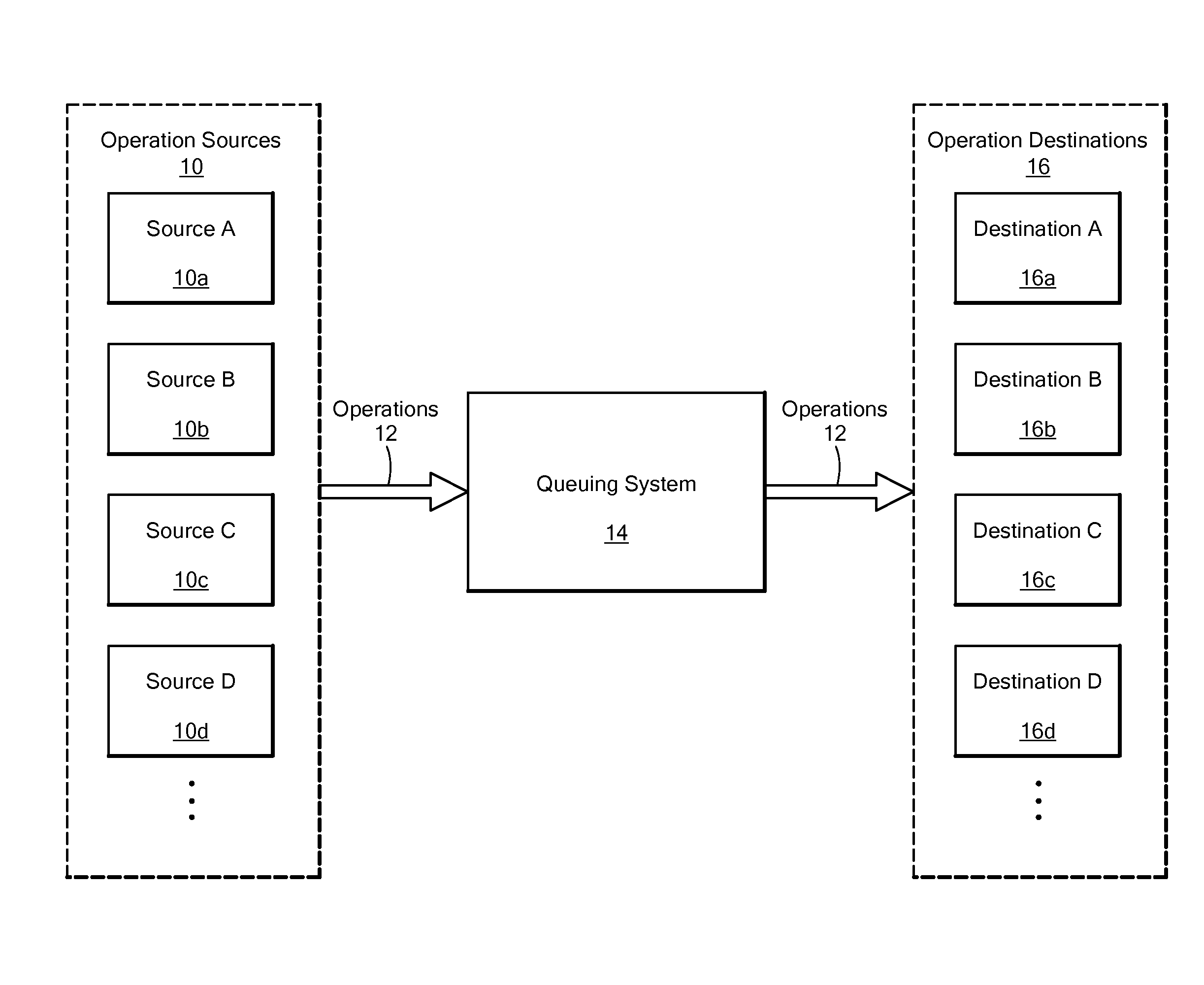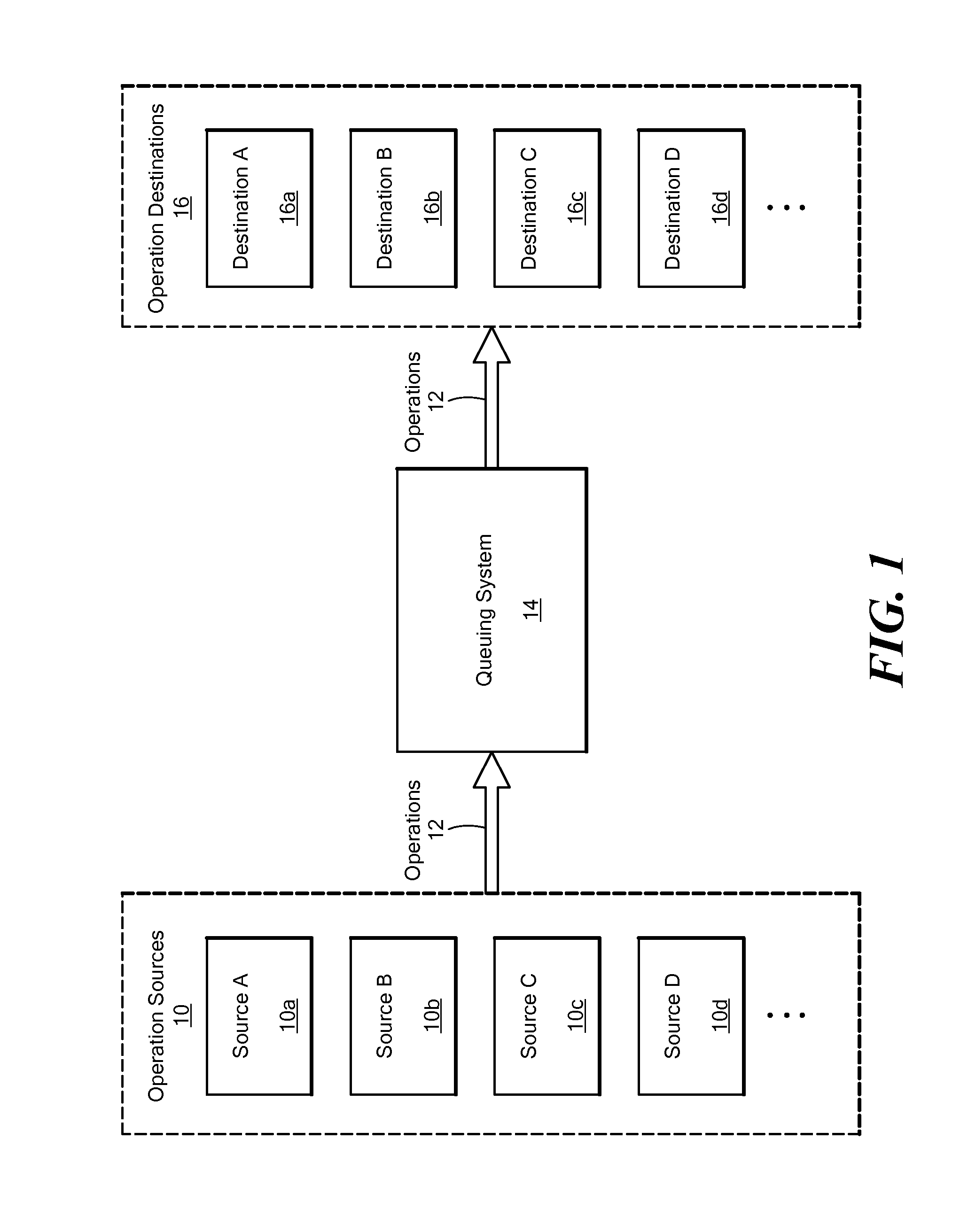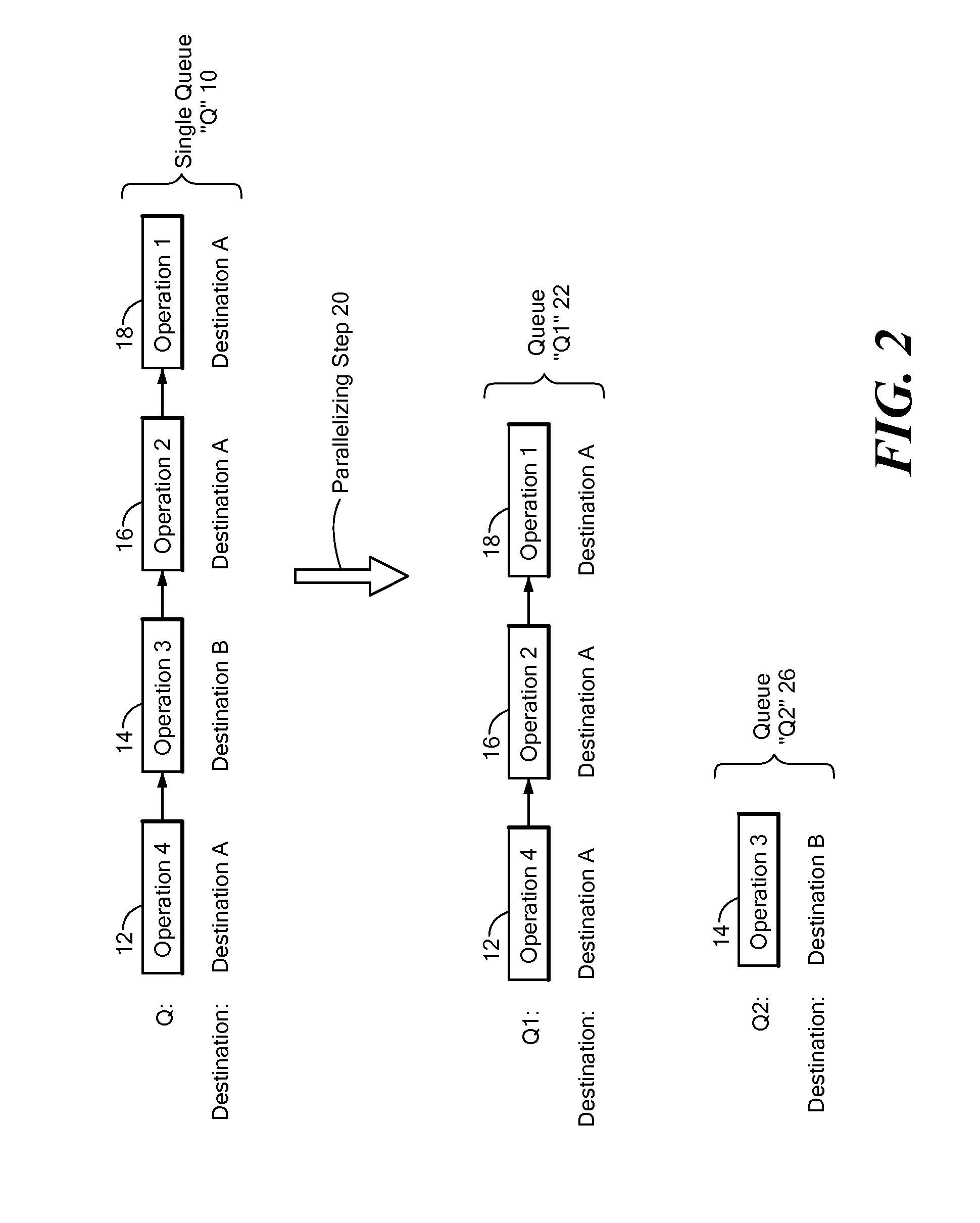Method and system for dynamic queue splitting for maximizing throughput of queue based operations while maintaining per-destination order of operations
a dynamic and queue-based technology, applied in the field of queue systems, can solve problems such as queue selection for splitting, and achieve the effects of reducing the serial nature of queue entry processing, increasing parallelism, and reducing the average wait tim
- Summary
- Abstract
- Description
- Claims
- Application Information
AI Technical Summary
Benefits of technology
Problems solved by technology
Method used
Image
Examples
Embodiment Construction
[0023]FIG. 1 is a logical block diagram showing components in an illustrative embodiment of the disclosed system. As shown in FIG. 1, Operation Sources 10, shown for purposes of illustration including Source A 10a, Source B 10b, Source C 10c, Source D 10d, etc., produce Operations 12 to a Queueing System 14. The Queuing System 14 stores Operations 12 until they are consumed by Operation Destinations 16, shown for purposes of illustration including Destination A 16a, Destination B 16b, Destination C 16c, Destination D 16d, etc. Each of the Operations 12 is destined for one of the Operation Destinations 16, and is consumed by that single destination when it is removed from the Queuing System 14. As described further below, the Queueing System 14 includes one or more queues organized into a dynamically configured queue tree.
[0024]The Operation Sources 10 may include any specific kind of software and / or hardware system that produces operations. For example, the Operation Sources 10 may ...
PUM
 Login to View More
Login to View More Abstract
Description
Claims
Application Information
 Login to View More
Login to View More - R&D
- Intellectual Property
- Life Sciences
- Materials
- Tech Scout
- Unparalleled Data Quality
- Higher Quality Content
- 60% Fewer Hallucinations
Browse by: Latest US Patents, China's latest patents, Technical Efficacy Thesaurus, Application Domain, Technology Topic, Popular Technical Reports.
© 2025 PatSnap. All rights reserved.Legal|Privacy policy|Modern Slavery Act Transparency Statement|Sitemap|About US| Contact US: help@patsnap.com



